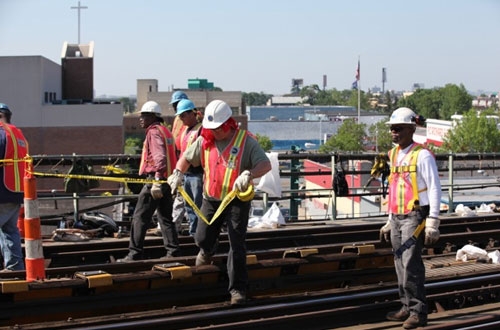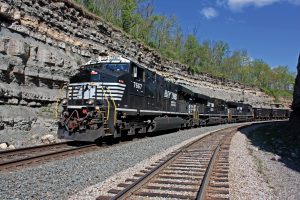MTA plans to invest in additional safety measures
Written by Jenifer Nunez, assistant editor
The Metropolitan Transportation Authority (MTA) plans to implement a series of new and enhanced safety initiatives to better ensure the safety of its customers and employees.
The safety investments are based on new mandates; recommendations by governmental bodies; compliance with existing laws, policies and procedures and new MTA initiatives, such as those supporting New York City’s “Vision Zero” initiative.
The MTA’s 2015 budget includes $84 million in safety initiatives and safety investments will total $363 million over the entire 2015-2018 four-year Financial Plan. The MTA Board will vote on next year’s final Financial Plan in December.
“Safety is the top priority for all of the MTA’s daily operations and the investments announced today reinforce that emphasis,” said MTA Chairman and Chief Executive Officer Thomas Prendergast. “We must continue to promote a culture of safety with customers and employees through training, improved work practices and investments in technology and equipment.”
Investments will focus on customer and employee safety and training ($46 million per year), increased track and right-of-way inspections and repairs ($21 million per year), upgrades and repairs to signals and signal systems ($8 million per year) and enhanced safety systems and communications with customers and employees ($3 million per year). An additional $6 million per year has been allocated as both the Long Island Rail Road (LIRR) and Metro-North Railroad continue their work to implement Positive Train Control (PTC).
New York City Transit will continue to focus on safety as its top priority. The Track Division will bolster inspections and maintenance of critical track corridors and dedicate additional teams for rapid defect verification and rail replacement. Investments will support additional technology for automated inspections as work continues on the full installation of Continuous Welded Rail. The Signals Division will receive additional resources and staffing analysis identified a need for additional signal maintainers to complete critical inspections and maintenance in required cycles. Resources will also be dedicated to ensure critical fire safety and communications equipment are inspected and maintained, including the new Help Point intercoms that are currently being installed. Designed to be both highly visible and easy-to use, these instant digital, instant communications devices offer customers immediate access to assistance and information with the touch of a button.
Building upon a series of initiatives that Metro-North developed as part of its 100-Day Plan announced last month, LIRR and Metro-North are working closely together to develop a series of initiatives to enhance the safety of rail passengers and employees. That has led in part to a series of newly announced LIRR initiatives. The LIRR is also assessing its safety culture and compliance with regulations and industry standards.
As a result of these collaborative efforts, LIRR will install video cameras in both the engineer’s cab and passenger compartments of its diesel fleet and the majority of its electric fleet. LIRR will also establish a Corporate Accident Investigation Unit. This new four-person unit, combining the expertise of the LIRR’s Transportation, Engineering and Maintenance of Equipment departments will be on call 24/7 to respond to employee, customer and rail incidents with responsibility for investigations, as well as the implementation of corrective actions as necessary.
In addition, the LIRR’s Maintenance of Way Division will invest in electronic devices to support track inspections that will ensure the integrity of data, enable trend analysis and allow for real-time communication of critical findings from the field. Track maintenance through rail grinding and track surfacing will be increased in order to mitigate the risk of rail defects and the potential for broken rails. Efforts will also begin to eliminate rail joints, enhancing the strength of the rail system. A new Wheel Impact Detector System will also monitor wheels for defects occurring since previous inspections.
Last May, Metro-North announced a wide-ranging series of steps it was taking to improve safety. This budget announcement defines the funding for many of those initiatives. They include the establishment of a comprehensive Office of System Safety, mitigating risks associated with employee fatigue, installing outward- and inward-facing video and audio recorders on trains, employing advanced track inspection technology and ensuring track is maintained to Metro-North standards.





